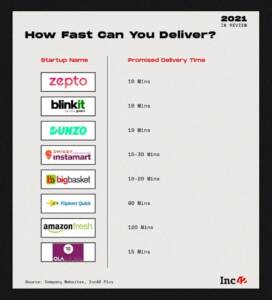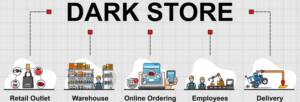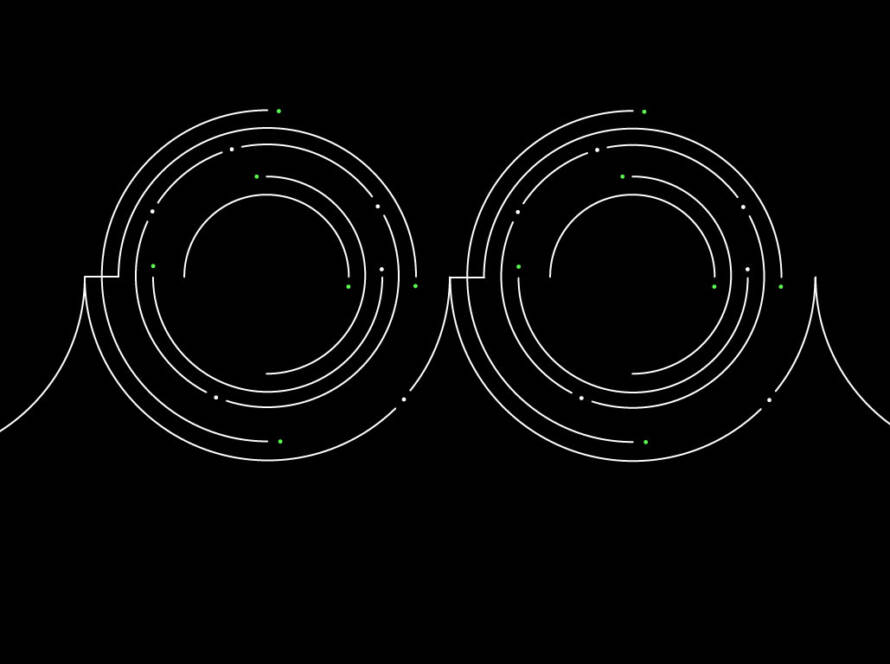Quick commerce has created a lot of buzz in the startup ecosystem lately. What enables the commerce to be as quick as the new-age logistics and delivery startups claim – are Dark Stores. It is thus important to throw some light on what these dark stores are and how they function.
From pizza delivery guaranteed in 30 minutes to groceries being delivered in only 10 minutes, we have come a long way. Daily-need groceries, that often take time in quality selection and witness long queues at grocery stores, new-age startups took up this challenge to deliver these essentials at the doorstep within 10 minutes.
It started with Swiggy Instamart’s 15-30 minutes delivery, followed by Dunzo’s promise of 19 minutes and eventually Grofers (now blinkit) and Zepto offering last-mile delivery in under 10 minutes. Groceries are just one example where last-mile delivery time has significantly reduced, other D2C products, including medicines and food and beverages can now be delivered on the same day when the order is placed.
How is this being made possible? The answer is Dark Stores.

(Source: Year 2021 in Review, Inc42 Plus)
What are Dark Stores?
Any unused small or big establishment, typically to the size of 1,500 to 2,000 square feet, being used exclusively for online order fulfillment is a dark store. It’s a hard reality that many traditional kirana stores, shops, showrooms, even banquet halls and other brick and mortar outlets were shut permanently during the COVID-19 pandemic. When any such establishment turns into a mini-warehouse or fulfillment centre catering exclusively to online orders, it’s called a dark store.
Dark stores can cater to online demand for groceries, medicines, consumer durables, food and beverages, apparel, footwear, home goods, etc. In other words, almost any tangible good (perishable/non-perishable) sold online can be accommodated in a dark store. All aspects of the supply chain, before the final product is delivered to the customer, are aggregated at a single dark store.

(Source: Advantages & Disadvantages of a Dark Store)
Instead of being located in the outskirts of the city, these fulfillment centres or dark stores are situated right in the neighborhood, catering to online demand in the vicinity. Each dark store can accommodate products of more than just one brand simultaneously. Startups leverage technology to reduce the processing time of online orders. Further data analytics gives useful insights about consumer buying patterns, tastes and preferences, unique to the locality where the dark store is operating.
So far, delivery of groceries has been the key focus since these are essentials. While dark stores can cater to order fulfillment for all types of products, they have more traction in delivery of daily essentials due to recurring demand. Going forward, quick delivery of medicines too has huge potential, helping patients with different ailments in getting instant access to medicines.
As of now, dark stores are more prevalent in urban areas, where the customer base is heavy and more accustomed to online shopping. Tier-2 and tier-3 India are yet to catch up in this segment. Brands are gradually witnessing rising online demand in these areas, but the existing setup is sufficient to cater to that demand.
Thus, presently dark stores may not be required in local neighbourhoods in sub-urban and rural areas. But the time is not far when these neighbourhoods get more habitual to online shopping, considering the revolutionary expansion of internet connectivity and smartphone usage across India.
Future Outlook
India’s internet base is growing rapidly (825.3 million as of March 2021) accompanied by massive growth in online shopping for anything and everything.
With fast rising internet penetration and normalisation of ecommerce, the efficiency in delivery mechanism would also have to be increased. Dark stores are enhancing this efficiency by reducing delivery costs for brands and increasing customer satisfaction through instant order fulfillment.
While the brick and mortar direct retail experience may still be a key factor for Indian shoppers, the retailers’ business model and offerings would have to be realigned with the emerging new priorities of millennial consumers, i.e. faster delivery and greater convenience.
Author:
Karan Pawani



